Posté par Damien Bril, le 4 avril 2013;
- Date limite : 1er juin 2013
- Date et lieu du colloque : 9-13 avril 2014, Austin
Austin, Texas, Society of Architectural Historians 67th Annual Conference, April 9 – 13, 2014 Deadline-CFP: 1 juin 2013
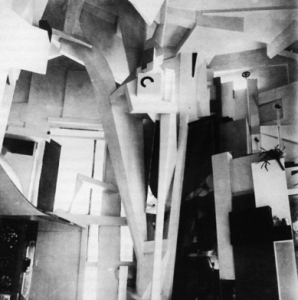 In the past couple of decades, architectural discourse has increasingly focused on issues of representation. Research has stressed that architecture is not confined to the physical object, but that it appears in a variety of different media. Consequently, various forms of visual representation have been investigated as carriers of architectural knowledge. Conversely, architecture’s capacity of evoking a strong sense of physical, spatial, and material presence as well as establishing what Michael Fried called “presentness” of the object, has shifted out of focus. This session investigates instances of architectural communication beyond or . . . → En lire plus In the past couple of decades, architectural discourse has increasingly focused on issues of representation. Research has stressed that architecture is not confined to the physical object, but that it appears in a variety of different media. Consequently, various forms of visual representation have been investigated as carriers of architectural knowledge. Conversely, architecture’s capacity of evoking a strong sense of physical, spatial, and material presence as well as establishing what Michael Fried called “presentness” of the object, has shifted out of focus. This session investigates instances of architectural communication beyond or . . . → En lire plus
Posté par Marine Schütz, le 3 avril 2013;
 Surrealism and Counterculture, 1960—1980 This panel broadly investigates Surrealism’s influences upon and relationship to international countercultural currents of the 1960s and 1970s. We invite papers that address Surrealism’s ongoing activity during this period as well as the movement’s interaction with and influence on popular or sub-culture, radical politics, post-Freudian psychologies, the sexual revolution, and the psychedelic movement, along with other relevant esoteric, marginal or avant-garde currents. Surrealism and Counterculture, 1960—1980 This panel broadly investigates Surrealism’s influences upon and relationship to international countercultural currents of the 1960s and 1970s. We invite papers that address Surrealism’s ongoing activity during this period as well as the movement’s interaction with and influence on popular or sub-culture, radical politics, post-Freudian psychologies, the sexual revolution, and the psychedelic movement, along with other relevant esoteric, marginal or avant-garde currents.
Significant research has been devoted to Surrealism’s rapport with prominent post-war art movements such as Abstract Expressionism and to a lesser degree Pop Art, but there is still much to be considered in terms of the movement’s influence on other artistic, political, literary, and musical developments during this period, particularly those that have exceeded . . . → En lire plus
Posté par Damien Bril, le 2 avril 2013;
- Date limite : 20 avril 2013
- Date et lieu du colloque : 30 octobre-2 novembre 2013, Greensboro (NC)
Call for Papers for the panel: Reciprocal Exchanges: Regionalisms and Modernisms in Dialogue (As part of The Southeastern College Art Conference 2013 Annual Conference, Greensboro, NC)
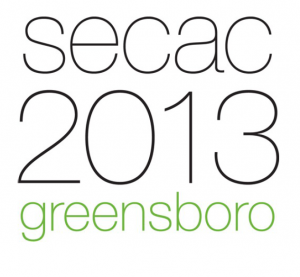 Recently, art historians have zealously endeavored to decenter or re-center formulations of modernisms (or Modernisms) away from the dominant urban centers of Paris, Berlin, London, and New York and toward artistic activities in more peripheral locations. Though exploring the native milieux of various modern artists has illuminated the significance of regional academic traditions and aesthetic preferences, as well as historical contingencies of place and geography, these studies have often privileged analysis of these peripheral circumstances over creating dialogue with the narratives of modernism . . . → En lire plus Recently, art historians have zealously endeavored to decenter or re-center formulations of modernisms (or Modernisms) away from the dominant urban centers of Paris, Berlin, London, and New York and toward artistic activities in more peripheral locations. Though exploring the native milieux of various modern artists has illuminated the significance of regional academic traditions and aesthetic preferences, as well as historical contingencies of place and geography, these studies have often privileged analysis of these peripheral circumstances over creating dialogue with the narratives of modernism . . . → En lire plus
Posté par Olivier Bonfait, le 1 avril 2013;
- Date limite : 31 mai 2013, 31 mai 2013
Charles Errard (ca. 1601-1689) la noblesse du décor par Emmanuel Coquery Docteur en histoire de l’art, conservateur en chef du patrimoine Préface par Olivier Bonfait Professeur d’histoire de l’art moderne à l’université de Bourgogne
 Charles Errard est longtemps resté une énigme : voilà un artiste qui a décoré une bonne partie du Louvre de Louis XIV, des salles à Fontainebleau et au premier Versailles, qu’on appelait pour habiller le nouveau parlement de Rennes ou le théâtre des Tuileries, un artiste auquel Louis XIV s’adressait comme au « Premier Peintre de ses Bâtiments » en 1659, un artiste de fait concurrent de Le Brun pour la première place artistique du . . . → En lire plus Charles Errard est longtemps resté une énigme : voilà un artiste qui a décoré une bonne partie du Louvre de Louis XIV, des salles à Fontainebleau et au premier Versailles, qu’on appelait pour habiller le nouveau parlement de Rennes ou le théâtre des Tuileries, un artiste auquel Louis XIV s’adressait comme au « Premier Peintre de ses Bâtiments » en 1659, un artiste de fait concurrent de Le Brun pour la première place artistique du . . . → En lire plus
Posté par Olivier Bonfait, le 1 avril 2013;
- Date et lieu du colloque : Chicago, 12-15 février 2014
- Date limite : 6 mai 2013, 6 mai 2013
 Comme chaque année, l’importante association CAA (l’équivalent de l’APAHAU, mais à l’échelle américaine, et avec les dollars et les aides des privés et des institutions ….) organise un important colloque. Participer à cette « conference » (pour reprendre le terme américain) est à la fois un moyen de se mettre à jour dans l’historiographie sur de nombreux sujets, de voir les champs d’études émergents, de se faire connaître à l’étranger (ou valoriser ses recherches). Pour les historiens de l’art tentés par un poste aux Etats-Unis, c’est l’occasion approprié pour se tenir au courant des jobs offerts, établir les premiers contacts et postuler pour la suite … Comme chaque année, l’importante association CAA (l’équivalent de l’APAHAU, mais à l’échelle américaine, et avec les dollars et les aides des privés et des institutions ….) organise un important colloque. Participer à cette « conference » (pour reprendre le terme américain) est à la fois un moyen de se mettre à jour dans l’historiographie sur de nombreux sujets, de voir les champs d’études émergents, de se faire connaître à l’étranger (ou valoriser ses recherches). Pour les historiens de l’art tentés par un poste aux Etats-Unis, c’est l’occasion approprié pour se tenir au courant des jobs offerts, établir les premiers contacts et postuler pour la suite …
Pour une information générale sur le colloque et sur les propositions (date limite . . . → En lire plus
Posté par Damien Bril, le 30 mars 2013;
- Date limite : 30 septembre 2013
Arts de l’oubli Formes et re-présentations
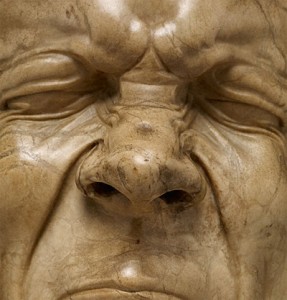 Ce numéro se propose d’analyser des images et des formes de l’oubli de l’Antiquité à nos jours. Ce numéro se propose d’analyser des images et des formes de l’oubli de l’Antiquité à nos jours.
Au fil des siècles, mémoire et oubli ont été à tour de rôle les dépositaires de valeurs sociales, culturelles, philosophiques, politiques, artistiques et, selon les époques et les contextes, ont pu prendre des significations opposées et/ou complémentaires.
Des Lotophages homériques aux Tristia d’Ovide, du mythe d’Er dans la République de Platon à la naissance des muses (oubli des maux) dans la Théogonie d’Hésiode, l’oubli a été décrit comme étant un obstacle à dépasser mais aussi comme une ressource, à savoir un passage incontournable avant le retour à la vie. . . . → En lire plus
Posté par Pascale Dubus, le 29 mars 2013;
- Date et lieu de la journée d'étude : 8-9 avril 2013, Nice, Villa Arson.
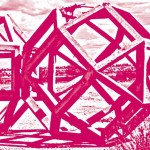 Qu’est-ce qu’une forme ? Question de fond dans le domaine de l’art. Mais forme, formalisme, sont des mots souvent employés dans le monde de l’art sans qu’on sache précisément ce qu’on entend par là. Il est tentant alors de se tourner vers d’autres domaines de recherche, où l’on s’intéresse aux formes, pour en savoir plus. En physique, en mathématique, en biologie, en géographie, en philosophie, en anthropologie et dans bien d’autres sciences, les formes font l’objet de toutes les attentions depuis bon nombre d’années. Qu’est-ce qu’une forme ? Question de fond dans le domaine de l’art. Mais forme, formalisme, sont des mots souvent employés dans le monde de l’art sans qu’on sache précisément ce qu’on entend par là. Il est tentant alors de se tourner vers d’autres domaines de recherche, où l’on s’intéresse aux formes, pour en savoir plus. En physique, en mathématique, en biologie, en géographie, en philosophie, en anthropologie et dans bien d’autres sciences, les formes font l’objet de toutes les attentions depuis bon nombre d’années.
Longtemps tenues à l’écart des recherches car considérées comme de simples enveloppes externes des phénomènes, trop variées pour être l’objet de lois générales, les formes sont devenues des sujets . . . → En lire plus
Posté par Damien Bril, le 28 mars 2013;
Chicago, CAA Annual Conference, February 12 – 15, 2014 Deadline-CFP: 6 mai 2013
Objects, Objectives, Objections: The Goals and Limits of the New Materialisms in Art History 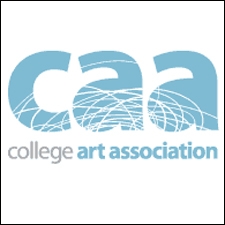 Our colleagues in the rest of the academy seem suddenly to be in thrall to things. Scholars in fields ranging from political theory to literature are moving away from an understanding of the world centered on people and texts, and towards a reconsideration of the interrelationships among all things, including humans. Artists and art historians, having always attended to the confluence of things and people, seem to be welcoming this shift with a mixture of delight and circumspection. It is our contention that artists and . . . → En lire plus
Posté par Olivier Bonfait, le 28 mars 2013;
- Date limite : 6 mai 2013, 6 mai 2013, 6 mai 2013, 6 mai 2013
Queer Gothic: Difference and Sexuality (CAA, 12-15 Feb 2014) Chicago, CAA Annual Conference, February 12 – 15, 2014 Deadline: May 6, 2013
Historians of British Art Session CAA Annual Conference 2014 Chairs: Ayla Lepine, Yale University; and Matthew Reeve, Queen’s University. ayla.lepine@yale.edu and reevem@queensu.ca
Over the past four centuries, the Gothic style and its range of significations (including pre-modernity, romanticism, the foreign, and Catholicism) have been frequently employed as a locus or a cipher for sexuality. Within broadly Anglican, neo-classical visual cultures, the style could express non-normative, minoritized experience, manifesting the values and ideals of alternative subjectivities. Recent work in art history, literature and gender studies has shown that from the Early Modern period to the present, Gothic aesthetics and ideas were appropriated and critiqued as an alternative historicist landscape . . . → En lire plus
Posté par Damien Bril, le 27 mars 2013;
- Date limite : 20 mai 2013
- Date et lieu : 8-13 septembre 2013, Bâle
eikones Summer School 2013 September 8 – 13
This year’s eikones Summer School of the NCCR Iconic Criticism will explore the following themes in three transdisciplinary courses:
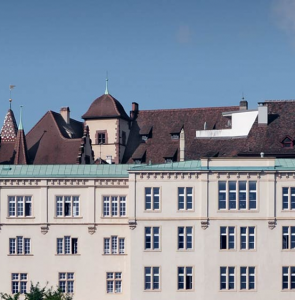 Course 1 examines the relationship and mutual reflection of film and painting. Aesthetic, theoretic, and historically significant aspects of this interplay will be analyzed, both from the point of view of the fine arts and from the point of view of film. Formal borrowings will be considered along with diegetic, technical, and ideological appropriations; the realm of the avant-garde will be discussed as well as that of the culture industry. Course 1 examines the relationship and mutual reflection of film and painting. Aesthetic, theoretic, and historically significant aspects of this interplay will be analyzed, both from the point of view of the fine arts and from the point of view of film. Formal borrowings will be considered along with diegetic, technical, and ideological appropriations; the realm of the avant-garde will be discussed as well as that of the culture industry.
Course 2 investigates the status of the image at the beginning of aesthetic . . . → En lire plus
Posté par Damien Bril, le 26 mars 2013;
- Date limite : 24 juin 2013
- Date et lieu du colloque : 22-24 novembre 2013, Auckland
Auckland, New Zealand: The University of Auckland and AUT University, November 22 – 24, 2013 Deadline-CFP: 24 juin 2013
 Moved: On Atmospheres and Affects 2013 Interstices Under Construction Symposium The University of Auckland and AUT University, Auckland November 22 to 24, 2013 Moved: On Atmospheres and Affects 2013 Interstices Under Construction Symposium The University of Auckland and AUT University, Auckland November 22 to 24, 2013
Keynote Speaker: Professor emeritus Gernot Böhme (Technical University of Darmstadt, Germany)
We invite you to address in a 20 minute presentation questions of cultural and experiential atmospheres, technification and affect. For instance, what are the roles of emotion and imagination in the context of lapses in ideals of subject integrity and the immersion in affective states? What is the role, politically, culturally, creatively, of felt or non-conscious . . . → En lire plus
Posté par Marine Schütz, le 21 mars 2013;
- Date et lieu du colloque : 11 et 12 avril, Centre Pompidou
 Paroles d’artistes Paroles d’artistes
Colloque International
L’entretien d’artistes est une forme ancienne de discours qui s’est particulièrement propagée depuis le milieu des années 1950 avec la démultiplication des supports (radio, télévision, presse, réseau internet), ce qui ne rend que plus systématique sa retranscription. On oublie souvent que ce genre, apparu au xvie siècle avec Francisco de Holanda dans le champ de l’histoire de l’art, représente un des fondamentaux de la discipline dont l’étude reste la plus lacunaire. Une généalogie de l’entretien d’artiste permet de pointer ses modalités dialectiques ou celles relevant de la maïeutique, mais aussi d’appréhender ses fonctions de légitimation, d’explication ou encore de contestation, alors que les relations . . . → En lire plus
Posté par Matthieu Lett, le 21 mars 2013;
- Date limite : 30 juin 2013
 2013 – ISSUE N.1 SECOND PHASE AND “CÓMPLICES NECESARIOS” (NECESARY ACCOMPLICES) ISSUE 2013 – ISSUE N.1 SECOND PHASE AND “CÓMPLICES NECESARIOS” (NECESARY ACCOMPLICES) ISSUE
Founded 25 years ago, Espacio Tiempo y Forma. Serie VII. Historia del Arte now enters a new era. From 2013, the journal is published online and in print; its layout, cover, numbering, and assessment criteria for academic quality have been renewed with the aim of increasing the journal’s impact. The new phase begins with the journal’s incorporation to the Open Journal Systems (OJS) and the launch of an annual themed issue edited by leading scholars in the field. The themed issue will consist of two articles by guest authors and is open to submissions of original and outstanding work that will be subject . . . → En lire plus
Posté par Matthieu Lett, le 19 mars 2013;
- Date limite : 22 mars 2013
- Date et lieu du colloque : 2-4 mai 2013, Université Ibn Zohr, Agadir-Maroc
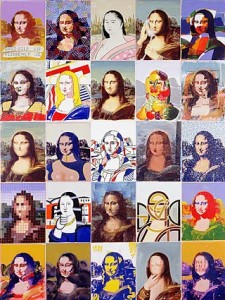 Les acceptions de l’intertextualité se succèdent depuis une trentaine d’années mais se ressemblent-elles ? Le colloque que nous organisons depuis quatre années à l’université Ibn Zohr, ici à Agadir au Maroc, a dans sa dernière édition ouvert cette approche critique littéraire à une approche transversale , dans la mesure ou le dialogue entre les arts, peinture, cinéma, bande dessinée, textes littéraires français mais également des textes appartenant à différentes langues et cultures s’est vu rapprocher à travers une vision critique laquelle s’est mue en une promesse de mémoire universelle. Les acceptions de l’intertextualité se succèdent depuis une trentaine d’années mais se ressemblent-elles ? Le colloque que nous organisons depuis quatre années à l’université Ibn Zohr, ici à Agadir au Maroc, a dans sa dernière édition ouvert cette approche critique littéraire à une approche transversale , dans la mesure ou le dialogue entre les arts, peinture, cinéma, bande dessinée, textes littéraires français mais également des textes appartenant à différentes langues et cultures s’est vu rapprocher à travers une vision critique laquelle s’est mue en une promesse de mémoire universelle.
Certes, le terme est fort mais il en était ainsi ; cette rencontre autour du dialogue entre les arts étant devenue d’autant . . . → En lire plus
Posté par Damien Bril, le 19 mars 2013;
- Date limite : 30 avril 2013
Home: Departure and Destination A Graduate Symposium
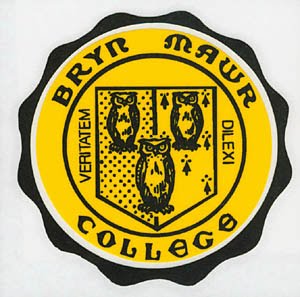 Presented by the Graduate Group in Classics, Archaeology, and History of Art Presented by the Graduate Group in Classics, Archaeology, and History of Art
In honor of Barbara Miller Lane, Andrew W. Mellon Professor Emeritus of Humanities and Professor Emeritus of History
October 4-5, 2013, Bryn Mawr College, Bryn Mawr, PA
Keynote speaker and respondent: Kostis Kourelis, Assistant Professor of Art History, Franklin & Marshall College
What makes a home, and who defines it? The home has a material presence and a place in the mind. It provides a locus of identity formation, negotiation, and display. Home stands as a site for social negotiation as well: who stays, who leaves, and why? What is at stake . . . → En lire plus
Posté par Damien Bril, le 18 mars 2013;
- Date limite : 30 avril 2013
Thresholds 42: « Human » prompts us to consider the past and present changing notion of ‘the human’ with regards to its physical, virtual, and psychological habitat.
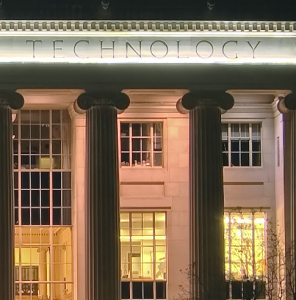 In the last decade innovations within cognitive imaging, computer interfaces, communication technologies, surrogate natures, sensory mediators, and global tracking have reshaped our understanding of the Self. This shift can be seen, on one hand, as a revolution of sensibilities while, on the other hand, still pushing towards an enlightenment-based, rationalist perspective of the human as a neurobiological mechanism. No matter which way this ‘human’ is being reshaped, does it not also reshape ‘the humanities’ as well as our understanding of ‘humanity’? Have . . . → En lire plus In the last decade innovations within cognitive imaging, computer interfaces, communication technologies, surrogate natures, sensory mediators, and global tracking have reshaped our understanding of the Self. This shift can be seen, on one hand, as a revolution of sensibilities while, on the other hand, still pushing towards an enlightenment-based, rationalist perspective of the human as a neurobiological mechanism. No matter which way this ‘human’ is being reshaped, does it not also reshape ‘the humanities’ as well as our understanding of ‘humanity’? Have . . . → En lire plus
Posté par Emmanuel Ussel, le 17 mars 2013;
- Date et lieu de la conférence : Vendredi 22 mars 2013, Paris, INHA.
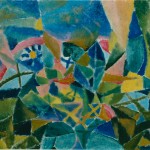 Inspirée de la récente oeuvre de William Kentridge The refusal of time, cette conférence s’efforcera de reconsidérer, et en un sens de réinvestir, les esthétiques de la simultanéité autour de 1913. On se concentrera sur un ensemble d’œuvres et d’écrits d’Otto Wagner, de Paul Klee et du couple Delaunay. D’un point de vue méthodologique, nous essaierons de dégager une certaine forme de duplicité. D’une part, nous essaierons d’envisager, du point de vue de l’histoire de l’art, certains dispositifs de synchronisation — dont le modus operandi découle directement de l’influence exercée par certaines techniques, comme la télégraphie. D’autre part, nous nous efforcerons de réinvestir la notion de synchronisation . . . → En lire plus Inspirée de la récente oeuvre de William Kentridge The refusal of time, cette conférence s’efforcera de reconsidérer, et en un sens de réinvestir, les esthétiques de la simultanéité autour de 1913. On se concentrera sur un ensemble d’œuvres et d’écrits d’Otto Wagner, de Paul Klee et du couple Delaunay. D’un point de vue méthodologique, nous essaierons de dégager une certaine forme de duplicité. D’une part, nous essaierons d’envisager, du point de vue de l’histoire de l’art, certains dispositifs de synchronisation — dont le modus operandi découle directement de l’influence exercée par certaines techniques, comme la télégraphie. D’autre part, nous nous efforcerons de réinvestir la notion de synchronisation . . . → En lire plus
Posté par Sarah Feron, le 16 mars 2013;
- Date et lieu des rencontres : 13 avril 2013, Paris, INHA.
 Pour la troisième année consécutive, la Galerie Colbert ouvre ses portes au grand public. Lieu historique conservant la mémoire du XIXe siècle et de ses fameux « passages », elle héberge depuis 2001 la plupart des établissements d’enseignement et de recherche d’Île-de-France en histoire de l’art, ainsi que l’Institut national du patrimoine. Les Rencontres du 13 avril 2013 permettront de visiter ce haut lieu de la recherche, de la formation et de la coopération internationale en histoire de l’art, et de découvrir les savoir-faire, les outils d’analyse, les méthodes d’examen et d’interprétation des chercheurs qui y œuvrent : historiens de . . . → En lire plus Pour la troisième année consécutive, la Galerie Colbert ouvre ses portes au grand public. Lieu historique conservant la mémoire du XIXe siècle et de ses fameux « passages », elle héberge depuis 2001 la plupart des établissements d’enseignement et de recherche d’Île-de-France en histoire de l’art, ainsi que l’Institut national du patrimoine. Les Rencontres du 13 avril 2013 permettront de visiter ce haut lieu de la recherche, de la formation et de la coopération internationale en histoire de l’art, et de découvrir les savoir-faire, les outils d’analyse, les méthodes d’examen et d’interprétation des chercheurs qui y œuvrent : historiens de . . . → En lire plus
Posté par Damien Bril, le 15 mars 2013;
- Date limite : 30 avril 2013
- Date et lieu du colloque : 4 octobre 2013, Ithaca (NY)
Cornell University, Ithaca, NY, October 4, 2013 Deadline-CFP: 30 avr. 2013
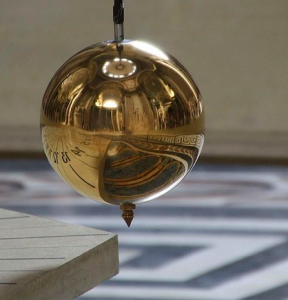 The graduate students in the History of Art program at Cornell University invite abstracts for papers to be presented at the Graduate Student Symposium to be held on October 4th, 2013. This year’s symposium, « Movement: The Body and Object in Motion », will feature a keynote lecture presented by Dr. Coco Fusco and will explore the theme of movement in visual culture via three panels consisting of 3 speakers each. The graduate students in the History of Art program at Cornell University invite abstracts for papers to be presented at the Graduate Student Symposium to be held on October 4th, 2013. This year’s symposium, « Movement: The Body and Object in Motion », will feature a keynote lecture presented by Dr. Coco Fusco and will explore the theme of movement in visual culture via three panels consisting of 3 speakers each.
Movement in visual culture is a fundamental theme across all media and periods. Movement defines both the pre-modern and modern periods in all their complexities, as peoples . . . → En lire plus
Posté par Pascale Dubus, le 12 mars 2013;
- Date limite : 29 mars 2013
- Date et lieu de la journée d'étude : Mardi 18 juin 2013, Coventry, University of Warwick.
 This one-day interdisciplinary conference aims to bring together researchers from a variety of disciplines to explore the definition, function and transmission of ‘myth’ from ancient times to the digital age. Organised by the Postgraduate Scholars of the Humanities Research Centre (HRC), Warwick, this conference seeks to elaborate on the established scholarship of myth-making through the exploration of new theoretical approaches and case studies from ancient and modern contexts. This one-day interdisciplinary conference aims to bring together researchers from a variety of disciplines to explore the definition, function and transmission of ‘myth’ from ancient times to the digital age. Organised by the Postgraduate Scholars of the Humanities Research Centre (HRC), Warwick, this conference seeks to elaborate on the established scholarship of myth-making through the exploration of new theoretical approaches and case studies from ancient and modern contexts.
This conference forms part of a wider interdisciplinary investigation into myth at the HRC and will include interactive activities in addition to papers. The day will also incorporate presentations . . . → En lire plus
|
Équipe Rédacteur en chef : Olivier Bonfait.
Rédacteurs : Elliot Adam (Moyen Age) ; Nicolas Ballet (XX-XXIe siècles) ; Matthieu Fantoni (musées) ; Antonella Fenech Kroke (bourses) ; Vladimir Nestorov (Lettre mensuelle)
Administrateur web : Matthieu Lett.
ancien éditeur : Pascale Dubus
anciens rédacteurs : Gautier Anceau, Sébastien Bontemps, Damien Bril ; Sébastien Chauffour ; Ludovic Jouvet ; Aude Prigot
|
 In the past couple of decades, architectural discourse has increasingly focused on issues of representation. Research has stressed that architecture is not confined to the physical object, but that it appears in a variety of different media. Consequently, various forms of visual representation have been investigated as carriers of architectural knowledge. Conversely, architecture’s capacity of evoking a strong sense of physical, spatial, and material presence as well as establishing what Michael Fried called “presentness” of the object, has shifted out of focus. This session investigates instances of architectural communication beyond or . . . → En lire plus
In the past couple of decades, architectural discourse has increasingly focused on issues of representation. Research has stressed that architecture is not confined to the physical object, but that it appears in a variety of different media. Consequently, various forms of visual representation have been investigated as carriers of architectural knowledge. Conversely, architecture’s capacity of evoking a strong sense of physical, spatial, and material presence as well as establishing what Michael Fried called “presentness” of the object, has shifted out of focus. This session investigates instances of architectural communication beyond or . . . → En lire plus

















